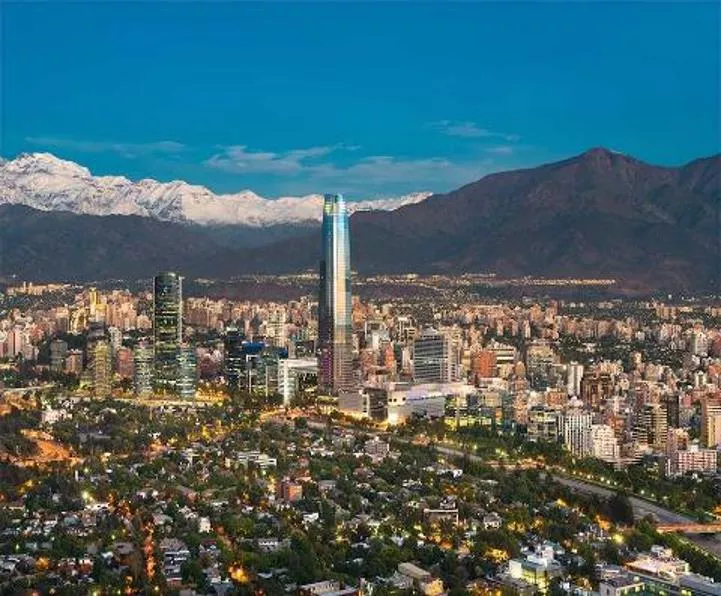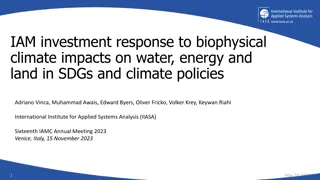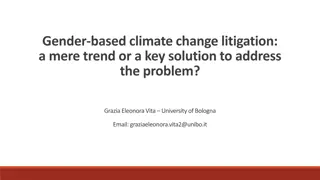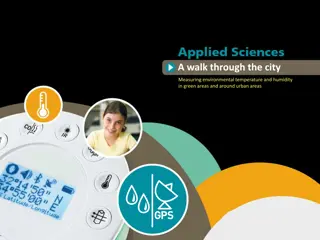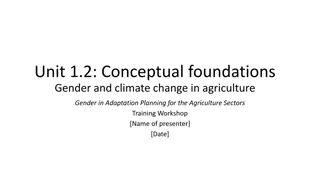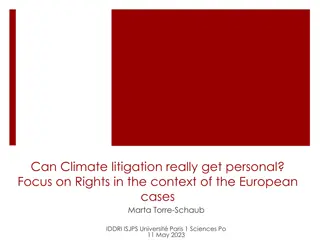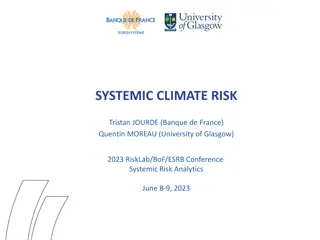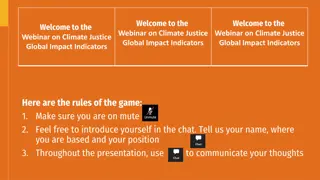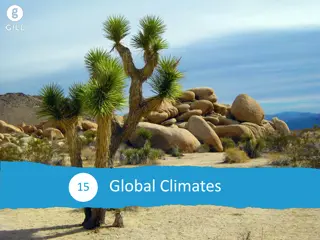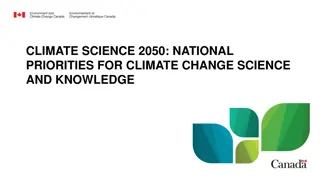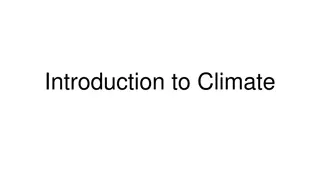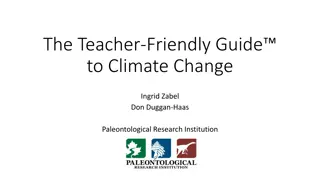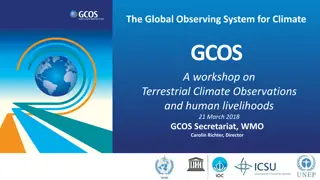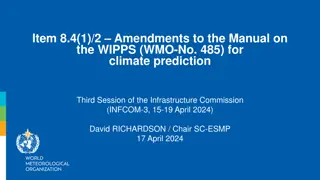Microclimates and Their Impact on Climate
Microclimates are small areas with distinct climate conditions influenced by factors like landscape, water bodies, and soil. These unique environments can be experienced in urban parks, mountainous regions, and coastal areas. Factors such as high land elevations, proximity to water bodies, and soil composition play pivotal roles in shaping microclimates. Human activities, like deforestation, can alter these localized climates, impacting temperature, humidity, and rainfall patterns.
Download Presentation

Please find below an Image/Link to download the presentation.
The content on the website is provided AS IS for your information and personal use only. It may not be sold, licensed, or shared on other websites without obtaining consent from the author.If you encounter any issues during the download, it is possible that the publisher has removed the file from their server.
You are allowed to download the files provided on this website for personal or commercial use, subject to the condition that they are used lawfully. All files are the property of their respective owners.
The content on the website is provided AS IS for your information and personal use only. It may not be sold, licensed, or shared on other websites without obtaining consent from the author.
E N D
Presentation Transcript
Microclimates We know that a country s climate is influenced by its location on the globe, but climate is also influenced by geographical features such as landscape. Human activities can also have an influence on climate. They can contribute to what are known as microclimates.
What is a microclimate? A microclimate is the climate of a very small area that differs from the climate of the surrounding area.
What is a microclimate? We can experience the effect of a microclimate if we walk into a park in the middle of a busy city. The air is cooler in the park than it is on the city streets. This can also happen in mountainous regions and areas that are close to the sea. Let s explore the reasons why.
Landscape Areas of high land such as mountainous regions are colder and windier than areas of low land. The city of Santiago in Chile experiences higher temperatures than the mountains that surround it.
Water Water bodies have an influence on climate. Water absorbs and releases heat more slowly than land does. Ocean temperatures increase very slowly in spring and decrease very slowly in autumn. The temperature stays fairly constant.
Water The city of Malaga in Spain experiences mild temperatures in both summer and winter because it is located beside the sea. The same effect happens close to other large water bodies, such as lakes and rivers.
Soil Soil affects climate in many ways. Forests contain rich soil that holds lots of water and makes the air humid. Trees and other plants also hold lots of water, and absorb heat. This is one of the reasons why it is important to have gardens in cities.
Deforestation When a forest is cleared to build an urban development, the soil gets covered up with concrete. Rainwater flows into drainage systems instead of being absorbed by soil and plant roots, leaving built-up environments prone to flooding during heavy rainfall.
Temperature Most cities experience microclimates. Urban centres tend to be warmer than the surrounding areas. Temperatures in cities tend to be 1 2 C higher in winter and 5 C higher in summer. These warmer urban areas are called urban heat islands.
Human activity The higher temperatures are caused by human activities. Road surfaces are made of non-reflective materials that absorb heat. Buildings absorb heat from the sun and release it into the atmosphere.
Human activity Heat is generated by central heating systems in homes and other buildings during winter. This heat gets released into the atmosphere as the buildings cool down overnight. Factories also produce a lot of heat. This all contributes to the microclimate in a city.
Rising temperatures In Tokyo, Japan, the average temperatures have risen by 3 C over the past 100 years. Higher temperatures increase the likelihood of thunderstorms. Higher temperatures also cause snow to fall mainly as sleet, resulting in fewer snow days for children in cities!
Australian microclimates Melbourne in Australia has a microclimate. The temperatures here are over 1 C higher than in the surrounding rural areas. Melbourne experiences frequent thunderstorms.
Characteristics of microclimates The microclimate of a city often results in cloudier, duller skies. Scientists have found that it is cloudier in the afternoon in London and Paris in spring and summer because the higher temperatures lead to more evaporation.
Urban microclimates As well as this, the smoke from cars and factories can lead to smog, which further traps heat. Smog hangs in the atmosphere like a low-lying cloud. It causes air pollution, which is a serious health risk.
Urban microclimates Most cities tend to have a greater number of dry days than rural areas have, but when it does rain in a city, the rainfall is heavier.
Urban microclimates Cities tend to be less windy than rural areas because buildings provide some shelter from the wind. However, there are some exceptions. The city of Chicago in the USA was built beside a huge lake called Lake Michigan.
Urban microclimates Chicago was laid out in a grid pattern, with long streets and tall buildings. This produces a wind tunnel effect, making the wind blow faster and colder through the streets. Chicago is nicknamed the Windy City!
Illustrations Shutterstock Beehive





